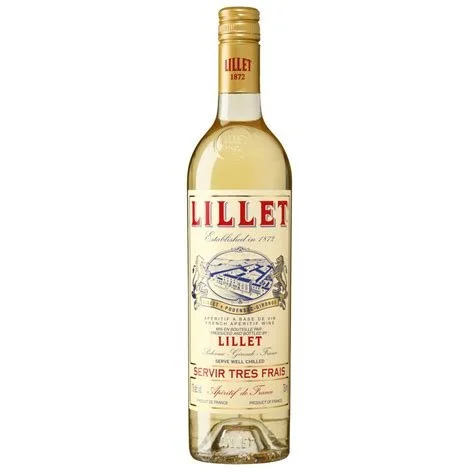APERITIF WINES
Light, Lifted, and Built for the Hour Before Dinner
Aperitif wines are a bright, approachable style of aromatized or fortified wine designed to stimulate the palate before a meal. Typically lower in alcohol and bitterness than vermouth, quinquina, or americano, these wines focus on gentle botanicals, subtle sweetness, and a clean, refreshing finish. While some fall under vermouth-adjacent traditions, others—like Lillet Blanc or Cap Corse Blanc—stand apart for their lighter body, floral aromas, and citrusy charm. Aperitif wines are made for sipping, spritzing, and pairing with snacks—and they shine in low-proof, early-evening cocktails.
Key Characteristics
Wine-based, mildly fortified and lightly aromatized. Most aperitif wines emphasize citrus peel, florals, or soft herbs, with little to no bitterness.
Style
Aromatized or fortified wine with a focus on lightness, refreshment, and floral or citrus character
Served chilled, spritzed, or mixed
Body
Light
Texture
Smooth, floral, clean; lightly sweet or softly honeyed
Primary Botanicals
Orange peel, grapefruit, quinine (sometimes), chamomile, elderflower, vanilla, gentian, cardamom, honey
Typical Flavors
Citrus blossom, orange zest, wildflowers, white peach, grapefruit, honey, faint spice
Origin & History
Aperitif wines emerged from French and Mediterranean drinking traditions, where wine was often infused with local herbs and fruits and served before meals. In the 20th century, brands like Lillet and Cap Corse defined the genre’s clean, citrus-forward profile. Unlike bitter aperitifs or classic vermouths, these wines offer a fruitier, more delicate expression—perfect for modern spritz culture and daytime cocktails.
How It’s Made
A base wine is lightly fortified with neutral spirit and infused with a mild blend of botanicals. Sugar is added for balance. These wines typically range from 15–18% ABV and are not aged. Some include quinine for a tonic-like lift; others lean purely floral or citrus.
Notable Styles
Grouped by base wine color and dominant flavor profile.
Lillet Blanc
Citrus, white florals, lightly honeyed
Lillet Rosé
Soft berry, grapefruit zest, rose petal
Cap Corse Blanc
Corsican white aperitif; floral and citrusy with a subtle quinine edge
Chinato Bianco
Rare, but similar in tone with a more vinous base
Artisanal Aperitif Wines
Increasingly made with regional herbs and fruits (e.g., Mommenpop, Lo-Fi)
Cocktail Pairings
Aperitif wines mix beautifully into bright, low-proof builds and citrusy classics. Think spritzes, sours, and Collins-style drinks.
Classic Cocktails
Vesper (originally with Kina Lillet), Corpse Reviver #2, French 75 (with Lillet), Spritz
Modern Mixes
Lillet & Tonic, Rosé Spritz, Elderflower Collins, Grapefruit Highball, Peach Aperitif Sour
Food Pairings
Perfect with salty, citrusy, or herb-driven small plates. Serve with snacks, antipasti, or seafood
With Savory
Cured salmon, goat cheese crostini, lemony hummus, endive and walnut salad, marinated feta
With Cheese
Fresh chèvre, ricotta, brie, alpine-style cheese, Comté
With Dessert
Lemon bars, grapefruit sorbet, shortbread cookies, berry panna cotta
How to Serve It
Glassware
Wine glass or balloon glass for spritz service
Temperature
Always chilled; serve over ice with citrus or topped with soda or sparkling wine
Storage
Refrigerate after opening. Best used within 4 weeks for brightness
Fun Fact
Lillet was once a quinquina (containing quinine), but after 1986 it was reformulated into a milder, floral-forward aperitif wine—leading bartenders to substitute Cocchi Americano in vintage recipes that called for Kina Lillet.
Try This If You Like
Floral White Wines
Elderflower Liqueur
Light Spritzes or low-proof cocktails
Fruit-forward Vermouth
White Port with Ttonic
Recommended Producers
These houses exemplify the diversity and craftsmanship of aperitifs, blending wine, citrus, and botanicals into elegant, refreshing expressions ideal for pre-dinner sipping.
Lillet
A historic French producer from Bordeaux, renowned for its balanced, wine-based aperitifs like Lillet Blanc and Rosé, offering bright citrus, floral notes, and subtle bitterness.


